In today’s fast-paced digital economy, organizations no longer just build software—they engineer products that are central to growth, differentiation, and user experience. For CXOs, the challenge lies not only in launching these products faster, but in ensuring they are secure, scalable, user-centric, and future-ready.
That’s where our Integrated Product Engineering Framework comes in—bringing together structured discovery, design excellence, deep technical assessments, and product lifecycle governance under one proven umbrella. This framework reflects our decade-plus journey of helping global enterprises and tech startups alike build successful digital products.
Why a Product Engineering Framework Matters
Many organizations still operate in a project mindset—driven by requirements and timelines rather than long-term product vision, usability, and market fit. Our framework replaces fragmented development with a cohesive, outcome-focused product engineering mindset. It allows enterprises to:
✅ Accelerate Time-to-Market
✅ Institutionalize Quality & Governance
✅ Improve Customer Experience
✅ Drive Continuous Innovation
✅ Reduce Technical Debt
🔍 Key Pillars of Our Product Engineering Framework
- Discovery-Led Product Engineering
We begin with understanding why the product exists, who it serves, and how it differentiates. This involves:
- Defining product vision and goals
- Conducting customer journey and competitor analysis
- Prioritizing features through hypothesis-driven validation
Our EDIT Assessment (Engineering, Design, Interface & Technical) helps shape a well-informed architecture and user experience blueprint early on.
- Digital Assets Hub
To shorten the engineering runway, we maintain a curated library of:
- Starter Kits and reusable components
- Reference architectures
- DesignPlus UX frameworks
- DevSecOps accelerators and infrastructure-as-code blueprints
This enables 10–15% productivity gain in initial development stages.
- BridgePoint: Our Product Engineering Process
From roadmap planning to MVP development and production readiness, we leverage:
- Agile & DevSecOps practices
- Shift-left testing and performance engineering
- Build vs. buy assessments
- Security by design (SAST, DAST, threat modeling)
We ensure scalability, accessibility, cloud-native readiness (API-first, microservices, containerization), and compliance (GDPR, HIPAA, CCPA).
- Robust Governance & Customer Success Management (CSM)
Our governance model institutionalizes:
- KPI-driven governance
- Knowledge management practices
- Continuous improvement cycles through Agile Maturity & Process Engineering (Calibrate™)
This keeps all stakeholders—from business to engineering—aligned throughout the product lifecycle.
- Innovation & Productization at Scale
Through our Managed Innovation Program, teams can experiment with new technologies, validate hypotheses, and productize promising outcomes—resulting in IP creation and competitive edge.
🧠 Product Engineering Mindset: Beyond Just Code
A truly mature product engineering culture doesn’t stop at delivering features. It is built on principles like:
- Empathy for end users
- Product-market fit thinking
- Active ownership and accountability
- Technical excellence and architecture evolution
- Focus on NFRs (performance, security, accessibility, compliance)
- Continuous removal of tech debt
We encourage engineers to partner with the customer and think like product managers, not just coders.
🚀 Greenfield vs Brownfield Product Engineering
✅ Greenfield Engineering
For new products, we offer a full-stack approach from discovery to MVP launch. This includes:
- Platform and solution architecture
- Hypothesis-driven testing
- Cloud-native design and DevSecOps
- Design-led user experience (DesignPlus)
- Observability and performance tooling
♻️ Brownfield Modernization
For legacy products, we offer:
- EDIT assessments and rationalization planning
- 6-R migration strategy (Rehost, Refactor, Rearchitect, etc.)
- Tech debt identification and resolution
- UX modernization and re-platforming
- SaaSification and microservices transformation
Both approaches are backed by continuous testing, security validation, compliance, and APM best practices.
💡 Real Outcomes, Not Just Activities
Here’s what our clients gain by adopting our Product Engineering Framework:
|
Benefit |
Impact |
|
Faster MVP Delivery |
Starter Kits, automation, DevOps accelerators |
|
Reduced Technical Debt |
EDIT assessments and architectural refactoring |
|
Improved App Performance |
Performance engineering and observability tooling |
|
Consistent Quality |
Standardized templates and governance mechanisms |
|
Superior User Experience |
DesignPlus UX and accessibility best practices |
|
Future-Ready Products |
Built-in security, scalability, and maintainability |
🎯 In Summary: A Proven Framework for the Product-First Enterprise
Whether you’re a SaaS startup defining your first MVP or an enterprise modernizing a complex application portfolio, this Product Engineering Framework offers predictability, scalability, and innovation at speed.
If you’re a CXO looking to move from fragmented digital initiatives to a product-led digital strategy, our approach can help you:
- Institutionalize engineering excellence
- Reduce risk and delivery variability
- Build differentiated products, faster
Let’s partner to shape the future of your digital products.




